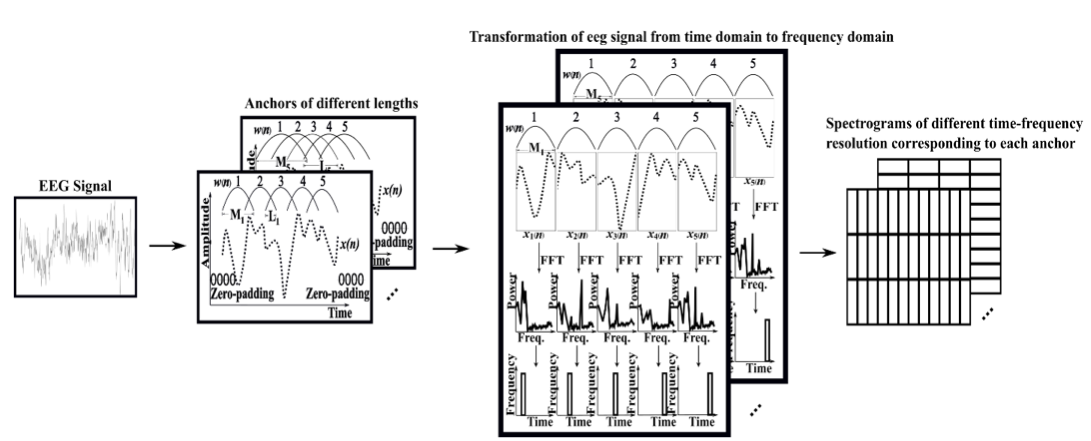Preprint
https://arxiv.org/abs/2011.14694
Abstract
Objective. Brain-computer interfaces (BCIs) enable direct communication between humans and machines by translating brain activity into control commands. Electroencephalography (EEG) is one of the most common sources of neural signals because of its inexpensive and non-invasive
nature. However, interpretation of EEG signals is non-trivial because EEG signals have a low spatial resolution and are often distorted with noise and artifacts. Therefore, it is possible that meaningful patterns for classifying EEG signals are deeply hidden. Nowadays, state-of-the-art deep-learning algorithms have proven to be quite efficient in learning hidden, meaningful patterns. However, the performance of the deep learning algorithms depends upon the quality and the amount of the provided training data. Hence, a better input formation (feature extraction) technique and a generative model to produce high-quality data can enable the deep learning algorithms to adapt high generalization quality. Approach. In this study, we proposed a novel input formation (feature extraction) method in conjunction with a novel deep learning based generative model to harness new training examples. The inputs (feature vectors) are formed (extracted) using a modified Short Time Fourier Transform (STFT) called anchored-STFT. Anchored-STFT, inspired by wavelet transform, tries to minimize the tradeoff between time and frequency resolution. As a result, it extracts the inputs (feature vectors) with better time and frequency resolution compared to the standard STFT. Secondly, we introduced a novel generative adversarial data augmentation technique called gradient norm adversarial augmentation (GNAA) for generating more training data. Thirdly, we investigated the existence and significance of adversarial inputs in EEG data. Main Results. We evaluated our methods on BCI competition II dataset III and BCI competition IV dataset 2b. Our approach obtained the kappa value of 0.814 for BCI competition II dataset III and 0.755 for BCI competition IV dataset 2b for session-to-session transfer on evaluation data. For BCI competition II dataset III, our approach yielded 3.9% and 1.75% improvement over the winner algorithm and the state-of-the-art result, respectively, whereas, for BCI competition IV dataset 2b, our approach yielded 6.5% improvement over the winner algorithm of the competition.
Significance. The results of this study show that the proposed methods can enhance the classification accuracy of BCI decoding applications. To the best of our knowledge, we are the first to investigate the existence of adversarial inputs on the neural data by applying adversarial perturbation using a novel method.

